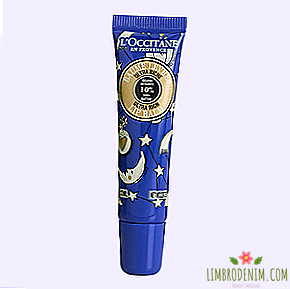"Tastier baby only": Why do women eat the placenta
Medical science over the past decades incredibly advanced: many tumors have ceased to be a sentence, cyber prostheses almost indistinguishable from real legs have appeared, it is possible to give birth to myopia with a laser almost without serious consequences or in a matter of minutes. It is all the more surprising that the army of supporters of anti-scientific methods does not give up its positions - these are homeopaths, HIV-dissidents, and lactivists, who equate harm to the formula almost to the harm of heroin. In an effort to “rejuvenate with natural remedies,” people spend time and money on superfoods, participate in meaningless detox programs, and even eat the placenta after childbirth. We understand why they do it and whether there is a sound grain in it.

The placenta is the only temporary organ in the human body; during pregnancy, it serves as a filter, protecting the fetus from the penetration of harmful components. That is why, when medication is being discussed during pregnancy, it is important whether this or that substance passes through this barrier. The functions of the placenta are to protect the fetus, to nourish it, to maintain a stable temperature, to deliver oxygen (after all, the child is not breathing) and to eliminate decomposition products. Another placental tissue produces hormones that support the normal course of pregnancy.
The baby is connected to the placenta by the umbilical cord - that is, a few minutes after birth, when the umbilical cord was cut, the connection is lost, and the placenta is considered to have fulfilled its function. It is disposed of in the maternity hospital or hospital - ideally in compliance with all sanitary standards, because any biological materials can be dangerous. But now the movement, which cannot be called anything other than worship of the placenta, is gaining momentum - it is carefully collected, talked to, buried in a certain place, made prints and pendants, or taken internally in one form or another.
There is an opinion that some peoples of New Zealand, China, or the Hawaiian Islands have been doing this for centuries — truth, science refutes it; nevertheless, placenta worship comes to the Western world, with all its advanced medicine and modern technology. The hype did not pass celebrities: in 2013, pregnant Kim Kardashian publicly asked the cook if she could prepare the placenta. The star of the Big Bang Theory, Maiim Bialik, has repeatedly stressed that all mammals eat the placenta and that its benefits are indisputable. Other famous placenta fans include Alicia Silverstone and, for example, Russian singer Sasha Zvereva. Good money is earned on the idea of returning to "all natural": the instagram is full of capsules with the placenta - a bottle can cost, for example, 250 British pounds. On Amazon, the cookbook for sale “Twenty-five dishes from the placenta” is on sale - ironic (we hope) comments like “my guests no longer speak with me”, “why is there no vegan option?” or "only a real baby tastes better."
Among the positive effects of eating the placenta is called a faster recovery after childbirth, increased energy levels, stimulation of milk production and improved hormonal balance. Needless to say, milk synthesis and the normalization of hormonal balance occur after the birth by themselves, and it is impossible to conduct a full-fledged study of how much the "energy level" has increased after eating the placenta. What is "faster recovery" and how to compare its speed after the same delivery, only with placental capsules and without them? As usual, if a scientific basis is assumed behind loud wording, it is pulled by the ears. "The placenta is an endocrine organ, which means it will quickly restore the hormonal balance" - somewhere we have already heard about the "treatment of the like". The argument that all mammals eat up the placenta after giving birth is not strong enough either - according to scientists, this is done first of all so as not to leave traces for predators.

It cannot be said that science is completely unaware of this tendency - placentophagy is actively studied; last year a detailed review of articles and studies on this topic was published. According to the authors, although the placenta does contain iron, hormones and nutrients, one cannot speak about their stability either in the raw placenta, which left the limits of the human body, and even less in the preparation process. In one of the studied articles, it was reported that the majority of 189 women had a positive experience of eating the placenta and improved mood - however, depression after previous births, which was compared with the current state, many of them were not officially diagnosed, and the author was the founder placenta capsule companies.
Modern research on how the placenta affects the synthesis of milk does not exist - and the only one referred to by the promoters of the use of the placenta, was conducted in 1954 and does not meet current scientific standards. In several studies in animals, it was confirmed that eating the placenta immediately after childbirth alleviates pain, because it contributes to the development of natural opioids. True, this is hardly applicable to the situation of the birth of a child for practical reasons - and is this anesthesia necessary for those who have access to high-quality and safe anesthesia? Regarding the improvements in mood and energy inflow reported by women themselves, it is very likely that the reason lies in the placebo effect.
There is no evidence and benefit of placental components in creams and serums. Although placenta-based cosmetics have been sold for fifty years with varying success, there is no scientific basis for any special effects, and advertising traditionally affects the consumer’s emotions: “What is good for an infant is good for you.” Some doctors even express doubts about the safety of such creams: it is not known what effects residual hormones may have if they retain their activity. The authors of the official toxicological report emphasize that there is no evidence of the safety of placenta derivatives in cosmetics - and if they are used, they should be as clean as possible and devoid of any activity.
Even worse, the placenta as a food additive is not only useless, but also unsafe - it is non-sterile and may contain a wide variety of bacteria and viruses. In addition, as a fetus, it can accumulate harmful elements such as cadmium, mercury or lead. Capsule manufacture often occurs in home laboratories without complying with any standards for the production of food additives — and the work of the companies providing these services is not regulated by official health authorities.
Less than a month ago, the American Center for Disease Control and Prevention published a report about a severe streptococcal infection in a newborn - the source of the infection was the capsules with the placenta taken by the mother. Fortunately, the child survived after several courses of antibiotics. According to experts, the temperature to which the placenta is heated in the manufacture of capsules is simply not enough to destroy dangerous microorganisms. Unfortunately, placentophagy is not another innocuous hobby for celebrity and instagram bloggers - it can cause serious harm, including to a young child.
Photo: Sebastian Kaulitzki - stock.adobe.com, Sebastian Kaulitzki - stock.adobe.com





